Scott Gorham: The SDE Interview
Thin Lizzy guitarist on remixing Jailbreak and Johnny The Fox

Thin Lizzy’s two definitive studio albums, Jailbreak and Johnny The Fox, have been remixed and remastered as part of a new 5CD and Blu-ray box set called 1976, after the year in which both the records were released.
The set includes new Dolby Atmos and stereo mixes, as well as outtakes, BBC sessions and a 1976 concert recorded in Cleveland, Ohio.
Jailbreak, which came out in March 1976, features the classic title track and ‘The Boys Are Back In Town’, which is arguably the band’s most well-known song, while Johnny The Fox, which was released just six months later in October, includes the funk-influenced ‘Johnny the Fox Meets Jimmy The Weed’ and the hit single, ‘Don’t Believe A Word.’
SDE spoke to one of Thin Lizzy’s twin lead guitarists, Scott Gorham, who joined the band in 1974, aged 23, after moving to London from his native California. He tells us about working on the box set, why 1976 was a make-or-break year for the band, co-writing songs with Phil Lynott, and how Thin Lizzy never managed to capture their live sound in the studio.
SDE: You’ve overseen the box set. Did you work closely with audio engineer Richard Whittaker on the new mixes? What was your main role in the project?
Scott Gorham: Good question. I knew that Richard had been hired to do some updated remixes of the two albums – it got to the point where he said he’d pretty much done them, so he called me up and said, ‘Do you want to come down and have a listen?’
I listened in private at his home studio – I had no designs on changing anything or going there for any mixing purposes… I was purely going there to have a listen, and he played me the first track, which was ‘Jailbreak.’
I asked Richard if there was any way in which we could bring the bass up a little bit, or if that was fixed in the mix? He said, ‘We can bring it up…’
So, we fixed the bass, and then I said, ‘If you can do that, can we level up the guitars a little more?’ And he said, ‘Absolutely.’
So, he did that – there were little touches… I knew that he was nervous about touching the albums because he had a lot of respect for both of them – he loves Thin Lizzy and he didn’t want to go in there and do anything willy-nilly, but, because I validated it… I said, ‘Hey, Richard, it’s OK, come on, you can bring the fader up here, you can put a little reverb on that, and, while we’re at it, why don’t we try changing the drum sound a little bit?’ I know Brian Downey [Thin Lizzy drummer] was never happy with the drum sound that he got in the studio.
So, Richard said: ‘How about this?’ He already had it lined up and he hit me with the drum sound, and I said, ‘Yeah, man – that’s what we’re talking about, right.’ It was really Richard who did the nuts and bolts of it.
What’s your take on remixing albums that were made almost 50 years ago in Dolby Atmos? Is it about record companies offering fans something different to spend their money on? Some people might see it as messing with the holy grail, but are you cool with it if it’s done well?
Absolutely. My whole take on it is that I have a lot of respect for the Thin Lizzy fans, but some of these albums have been out there for 40 or 50 years, and the fans have already got the original versions – they might have bought them two or three times… To me, it’s legal, because of the new technology that wasn’t available to us [at the time of recording the albums].
It’s interesting to see what would happen if some of the albums or songs were recorded or remixed today, but in no way do you want to destroy the feel of the song, or the way it was intended to be recorded. It’s purely just to make it sound a little more pleasant to the modern ear.
Jailbreak and Johnny The Fox are seen as the definitive Thin Lizzy albums, aren’t they?
They have to be, and they did what they were supposed to do – they got us out of trouble. If it wasn’t for ‘The Boys Are Back In Town’, you and I probably wouldn’t be talking right now.
The year before, you’d released the album Fighting, which only went into the UK charts at number 60. It was make or break for you, wasn’t it?
We had the fear of God put up us by our record company and management – they said, ‘If you don’t come up with the shit this time, we’re gonna show you the back door and we’re not gonna let you back in.’ There were even fans saying, ‘You guys have gotta step up here…’
The masterplan for bands back then was that you were given a three-album deal – with the first one you’re testing the water, with the second one you’re supposed to be showing a lot of promise, and the third one is going to be your breakthrough album.
With us, those two albums [Nightlife and Fighting] were absolutely miserable failures sales-wise, and I don’t think a lot of that was our fault – there were production values that just weren’t up to scratch.
We were so pissed off with the production on the Nightlife album that Phil said, ‘Well, fuck it – I’m going to produce this one myself’, which was another huge mistake. You don’t have your main guy, who is writing the bulk of the songs, singing everything, playing bass, and working on the arrangements, producing at the same time – it’s too much of a workload, plus, he’d never done it before. What was going through his mind?
So, before you recorded Jailbreak at Ramport Studios in London, you went to Farmyard Studios, in Little Chalfont, Buckinghamshire to write and rehearse, didn’t you?
We bought ourselves a four-track TEAC reel-to-reel – get how advanced we were! We learned how to use it and we were in a farmhouse – we rented that place out for a couple of weeks, and we must’ve been writing in that room for anywhere between eight and 12 hours a day. It worked out, because at the end of the two-and-a-half weeks we’d come up with 25 songs.
Jailbreak was produced by John Alcock, who’d worked with The Who. Was that a management decision?
I can’t remember whose idea it was – it was too long ago. I know I’ve said things about John Alcock that I probably shouldn’t have said… He was the guy that really brought the band together – we needed to be glued back together, especially in the studio.
We liked him enough and he produced ‘The Boys Are Back In Town’– he gave us that, so how do you not like a guy like that? That’s why when it came to Johnny The Fox we decided to carry on with John.
There are some interesting studio rarities included in the box set, like ‘Funky Job,’ which is on the Jailbreak outtakes CD, but shows the funkier direction you would explore on the next album…
That’s right – we were into all sorts of different grooves. I never looked at Thin Lizzy as a straight-ahead rock band, just doing heavy riffs and chords. I was known as having a ‘happy right hand’ – the chunky, rhythmic kind of thing. It was pretty simple to come up with those groove-orientated songs, which we all loved doing. Image-wise, I don’t know if it was the greatest thing to do – maybe we should’ve stuck to our hard rock guns, but we kind of always liked that eclectic feel – you couldn’t put Thin Lizzy into one bag, because we were a little bit more diverse than that.
That’s clear from listening to Jailbreak and Johnny The Fox – songs like ‘Running Back’ and ‘Romeo and the Lonely Girl’ showcase a different and more soulful side to the band…
‘Romeo and the Lonely Girl’ has more of a funk feel, but with a hard edge to it at the same time. I always liked that – I thought it was cool to merge those two kinds of music together.
There’s a lovely acoustic version of ‘Romeo and the Lonely Girl’ on the Jailbreak outtakes CD in the box set…
I can’t remember that version – I should, as I was probably playing on it! We did a lot of demos and it’s tough to remember all of them.
Is there still a lot of unreleased Thin Lizzy material?
There is.
You co-wrote ‘Warriors’, from Jailbreak, with Phil Lynott. Lyrically, it was inspired by rock stars who died young, like Jimi Hendrix and Duane Allman, wasn’t it?
Yeah – Phil was really influenced by Jimi Hendrix, who was one of the, if not the only, other black guys in the whole of rock music – and Hendrix just happened to be one of the most influential guitar players in the world. Phil loved that guy, and so did I – we all did.
Like Hendrix, Phil had that romantic gypsy image…
The romantic gypsy? Absolutely – you got it right. Phil took note of all these great musicians and personalities who were dying needlessly – he took it to heart, and that’s where the lyric from ‘Warriors’ came from.
Sadly, that song is prescient because Phil died aged 36…
He became a character in his own song.
So, the Jailbreak album goes to number 10 in the UK charts and The Boys Are Back In Town is a top 10 hit too – number 8 – and also your biggest single in America, but when you head off to tour the States, things don’t quite go as planned…
Well, it was always America… it was our bogey land. We could travel all around the world – Japan, Australia, Europe, the UK – and everything was fine, but when we went to America, something always happened, every single time.
Both myself and Phil really wanted to crack America – me, for obvious reasons. Phil grew up with the westerns and the TV programmes straight out of Hollywood – he was totally enamoured with the whole American thing.
So, every time we got on the plane, something would happen… Somebody would cut their hand, or quit halfway through, for God’s sake…
So, [in 1976] hepatitis came up and we had to cancel the rest of the tour – we were convinced that this was the tour that we were going to show America what we were all about. Phil got hepatitis and had to go home and go to an emergency ward – the doctor said to him: ‘You’ve got to get on the plane now, because you’re infecting everybody around you.’ All of us in the band had to get gamma globulin shots – they’re the most painful shots you can ever have.
I think what happened with America is that the fans became a little disillusioned – they’d bought tickets to see us, and they never saw us play, so the next time we came around they didn’t buy a ticket, because they didn’t trust us – and I can’t blame ‘em.
I think Phil was in hospital for a month – that’s when the doctor told him that his liver was so fried that he had to stay off alcohol for at least a year.
He managed to do it, didn’t he?
He did. Two months later, we were back on the road – Phil was watching all of us partying and having a great time, but he was dead straight, drinking his Diet Coke. That was terrible, because in the morning he’d say, ‘Man, do you know what you guys did last night? You should’ve seen yourselves.’ ‘Oh, shut up, Phil!’
So, did Phil write the songs for Johnny The Fox while he was recuperating from his illness?
No – that’s not what happened. When I said we’d come up with 25 songs [at Farmyard Studios], the first 10 were the Jailbreak album, and the next batch of 10 were Johnny The Fox. That enabled us to go out for six months and tour Jailbreak then almost immediately Johnny The Fox came out. Most people couldn’t believe it – nobody releases an album six months later – but they didn’t know how we’d written it.
When Johnny The Fox came out, we got to go on the road for another six months. It was a great 18 months of constantly playing and moving around, so it was very cool the way it turned out.
You and Phil co-wrote the ballad, ‘Sweet Marie’, which is on Johnny The Fox – it’s a lovely song. It has an interesting sound – there’s a ’50s thing going on, and then a sitar and a string arrangement…
Thanks. I played the sitar on ‘Sweet Marie’ – I wrote it with Phil, who wrote the lyrics. It was about a girl I’d been going out with. She was an art student from New York and her name was Marie. Everybody in the band really loved her, and Phil said, ‘How about we call the song ‘Sweet Marie?’
I went, ‘Er, I don’t know about that – that might get me in trouble later on down the road…’ But it was OK in the end – it’s a lovely song.
The song ‘Johnny the Fox Meets Jimmy the Weed’ has a funk feel. Was it inspired by ‘For the Love of Money’ by The O’Jays?
Yeah – we all loved that, and because of Phil’s black roots it was natural for him to want to do things like that. Johnny the Fox and Jimmy the Weed are real characters from a Manchester gang of thieves.
I met ‘em one night and I was thinking, ‘These guys are gonna have scars and will be carrying knives’, but they weren’t like that all – they were the sweetest people you were ever going to meet in your life, and they had their own little club where you weren’t allowed to pay for a drink all night long.
If you went with your wallet, they were offended. I thought, ‘I could come to this club a little more often’ – it was a pretty cool place.
There are lots of characters in Phil’s songs – some of them are quite shady…
Yeah – very colouful.
Phil trusted you to look at his book of lyrics, didn’t he? He wouldn’t have done that with the other band members, would he?
He wouldn’t do that with anyone else in the band – he caught Brian Robertson looking at his lyrics one day, and he snatched that thing away from him and said, ‘Don’t you ever…’
During a couple of the recordings, Phil would get stuck on a line – he would try and concentrate on the next word he needed to use. I would say, ‘How about blah-blah-blah?’ and he would, OK – let’s try that’.
I think that’s why he trusted me because I knew where he was going with the lyrics, and I knew the depth of that song and what it meant to him. When I came up with a word or a phrase, he would say, ‘Why don’t you take a look at my songbook and see what you think?’ He never did that with anybody, so I was like, ‘Well, thank you very much – that’s very cool’.
But my co-writes were always on the music – that was understood right from the get-go. Phil was the one who would write the lyrics exclusively – that was his encampment, and nobody would cross that line – but he would encourage everybody to bring their musical ideas.
Do you think that Thin Lizzy never managed to capture their live sound in the studio?
You’re absolutely right – a lot of that was because of the ‘70s and ‘80s mic-ing techniques, with a close mic right up on the speaker cone or right on top of the snare drum skin.
There were no overheads going on or space being created, and we didn’t know – we didn’t have the technical recording knowledge at that time.
It wasn’t until we got to working with Tony Visconti, who did Live and Dangerous, that he showed us how to use microphones to get the whole room – we immediately saw the difference, and that’s why we wanted to use him on as many albums… I wish we could’ve used him three albums earlier – it would’ve made life so much easier.
After Johnny The Fox was released, you played three sold-out nights at Hammersmith Odeon – some of those recordings are on Live and Dangerous, which is seen as one of the greatest live albums of all time. Did that make up for the cancelled US tour of ‘76?
I don’t think anything can make up for cancelled tours, but I know what you’re trying to say – you’re trying to be kind and all that… but when we saw the success of the live album, especially in America, that kind of made up for it. We let the American population see what we wanted to bring to them but couldn’t – ‘our apologies, but this is what it sounded like…’
We couldn’t get that live sound in the studio – it burned all of us. You’d go straight from a rehearsal to a recording studio where it sounded completely different. I don’t know, but we kinda got there in the end, so that’s what matters.
So, the box set is called 1976 – you joined Thin Lizzy in 1974, when you were 23. You had your audition the year I was born…
Oh my God – wait a minute, my back is hurting now [laughs].
You’d moved from the States to England after some personal issues. Did you see coming to London as a way out?
Yeah – I did. All the music I truly loved was English bands – there were a couple of singles by American bands that I fell in love with, but it was always the British bands.
So, what kind of groups were you listening to when you were growing up in the States?
Cream – the big supergroup. I was stunned when that happened. We also all thought Jimi Hendrix was English – he lived in England and the other two guys in the band were English… We all loved Van Morrison and Traffic – Steve Winwood, was so great, it was unbelievable.
In America, nobody knew Van Morrison was Irish until 40 years later – he never advertised it in America. We all thought he was English – don’t you think that’s kinda odd? It was the British invasion that knocked me right between the eyes – the population of England was the size of Texas, but the bands from there were dominating the American charts. How were they doing it? Was it something they were eating and drinking over there that we weren’t getting?
What was it like coming over from California and moving to London in the early ‘70s?
Well, it was a culture shock – no doubt about that. I remember coming out of St Pancras station and going into the street – I’d never seen so much red brick in one place in my life. Where were they getting all this red brick? It just looked incredible.
I loved California – it was 95 degrees. I flew over to England in a white t-shirt, jeans and a pair of tennis shoes, and when I got there, it was absolutely hammering down with rain… I couldn’t find my jacket because it was in my suitcase… but I loved every minute of it. Rain in Los Angeles was a rare commodity back then. I still love the rain…
And you still live in England…
I stayed – I’ve been here for 50 years. I only came for the weekend…
So, apart from working on Thin Lizzy projects, what else are you up to now? You stepped back from your band Black Star Riders a few years ago…
I’ve got a little art project – I’ve done exhibitions, which scared the piss out of me! They were drawings that were never supposed to see the light of day – they were just for me, and it was a relaxing thing to do when I was out on the road. Nobody in the band ever saw them and my wife never saw them until about three-and-a-half years ago.
She was the one who said I had to put them out because people would like to see them – she spent three years talking me into doing the website and letting other people see them. It’s out there now.
Any plans to reissue any more Thin Lizzy albums?
There are probably a couple more albums where I’d like to see a wee bit of remixing going on – not drowning them in new technology but enhancing them. I think Jailbreak and Johnny the Fox have come out well.
I still have aspirations of putting Thin Lizzy back together again, but at the appropriate time and for the appropriate reasons – not to just go out to tour the world. There’s got to be a reason for it, so I’ll figure out what those reasons are, and we’ll get the right people in the right positions in the band, which, for me, is extremely important. We’ll see – I’m always up for it.
Thanks to Scott Gorham, who was talking to Sean Hannam for SDE. The 1976 box set is available now via UMR.
Compare prices and pre-order

Thin Lizzy
1976 - 5CD+blu-ray box set

|
|
||||||||||||||||||||||||||||||
Compare prices and pre-order

Thin Lizzy
Jailbreak 2024 stereo remix - grey vinyl LP
Compare prices and pre-order

Thin Lizzy
Jailbreak 2024 stereo remix - red vinyl LP

|
|
||||||||||||||||||||||||||||||||||||||||||||||||||||||||||||||||||
Tracklisting
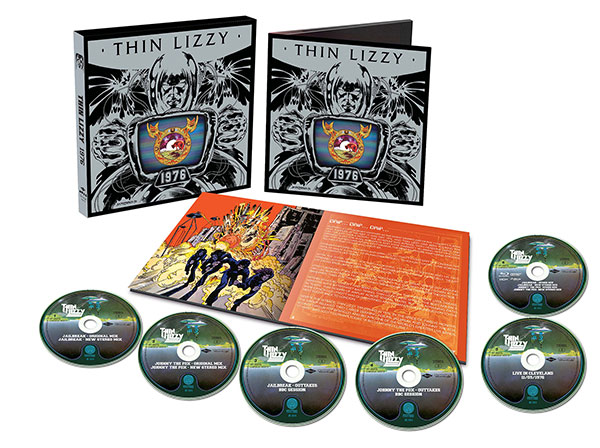
1976: Jailbreak and Johnny The Fox Thin Lizzy / 5CD+blu-ray box set
-
-
CD 1
Jailbreak – Original Mix
- Jailbreak
- Angel From the Coast
- Running Back
- Romeo And the Lonely Girl
- Warriors
- The Boys Are Back in Town
- Fight Or Fall
- Cowboy Song
- Emerald
Jailbreak – New Stereo Mix
- Jailbreak
- Angel From the Coast
- Running Back
- Romeo And the Lonely Girl
- Warriors
- The Boys Are Back in Town
- Fight Or Fall
- Cowboy Song
- Emerald
-
CD 2: Johnny The Fox
Johnny The Fox-Original Mix
- Johnny
- Rocky
- Borderline
- Don’t Believe a Word
- Fool’s Gold
- Johnny The Fox Meets Jimmy the Weed
- Old Flame
- Massacre
- Sweet Marie
- Boogie Woogie Dance
Johnny The Fox- New Stereo Mix
- Johnny
- Rocky
- Borderline
- Don’t Believe a Word
- Fool’s Gold
- Johnny The Fox Meets Jimmy the Weed
- Old Flame
- Massacre
- Sweet Marie
- Boogie Woogie Dance
-
CD 3: Jailbreak Outtakes
- Jailbreak TK5 – Demo
- Angel From the Coast – Alt Version
- Running Back – Demo
- Romeo And the Lonely Girl – Acoustic
- Warriors – Instrumental
- The Kid Is Back – TK1
- Fight Or Fall – Acoustic
- Cowboy Song – TK2 – Instrumental Demo
- Emerald – Alt Version
- Brian’s Number – TK3 – Outtake
- Funky Job – Outtake
- Emerald – John Peel BBC Session – 12/02/1976
- Warriors – John Peel BBC Session – 12/02/1976
- Cowboy Song – John Peel BBC Session – 12/02/1976
- Jailbreak – John Peel BBC Session – 12/02/1976
-
CD 4: Johnny The Fox Outtakes
- Johnny – Instrumental T2
- Rocky – Alt Version 2
- Borderline – 4 Track Demo
- Don’t Believe a Word – Alt Version 2
- Fool’s Gold – Demo
- Johnny The Fox Meets Jimmy the Weed -12-inch Mix
- Old Flame – Alt Version 2
- Little Big Horn
- Sweet Marie – Demo
- Boogie Woogie Dance – Instrumental Outtake
- Biriani Tango – Instrumental Outtake
- Son Of Warrior – Instrumental Outtake
- Jam aka Give It Up
- Jam – Improvised vocal off mic
- Don’t Believe a Word – John Peel BBC Session – 23/09/1976
- Johnny – John Peel BBC Session – 23/09/1976
- Fool’s Gold – John Peel BBC Session – 23/09/1976
- Johnny The Fox Meets Jimmy the Weed – John Peel BBC Session – 23/09/1976
-
CD 5: Live In Cleveland 11/05/1976 WMMS Radio Broadcast
- Jailbreak
- The Boys Are Back in Town
- For Those Who Love to Live
- Wild One
- Emerald
- It’s Only Money
- Romeo And the Lonely Girl
- Blues Boy
- Warrior
- Rosalie + Cowgirl Song
- Suicide
- Angel From the Coast
- Sha La La
- Me And the Boys
- The Rocker
-
Blu-ray
Jailbreak: Dolby Atmos, 5.1, 2024 Stereo and Original Stereo mixes
- Jailbreak
- Angel From the Coast
- Running Back
- Romeo And the Lonely Girl
- Warriors
- The Boys Are Back in Town
- Fight Or Fall
- Cowboy Song
- Emerald
Johnny The Fox: Dolby Atmos, 5.1, 2024 Stereo and Original Stereo mixes
- Johnny
- Rocky
- Borderline
- Don’t Believe a Word
- Fool’s Gold
- Johnny The Fox Meets Jimmy the Weed
- Old Flame
- Massacre
- Sweet Marie
- Boogie Woogie Dance
-
CD 1

 Interview
Interview
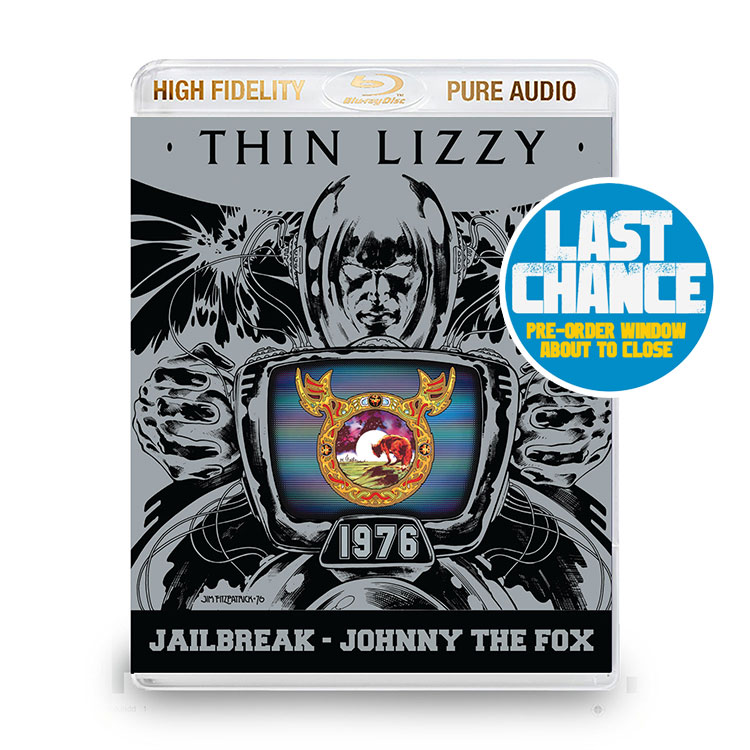
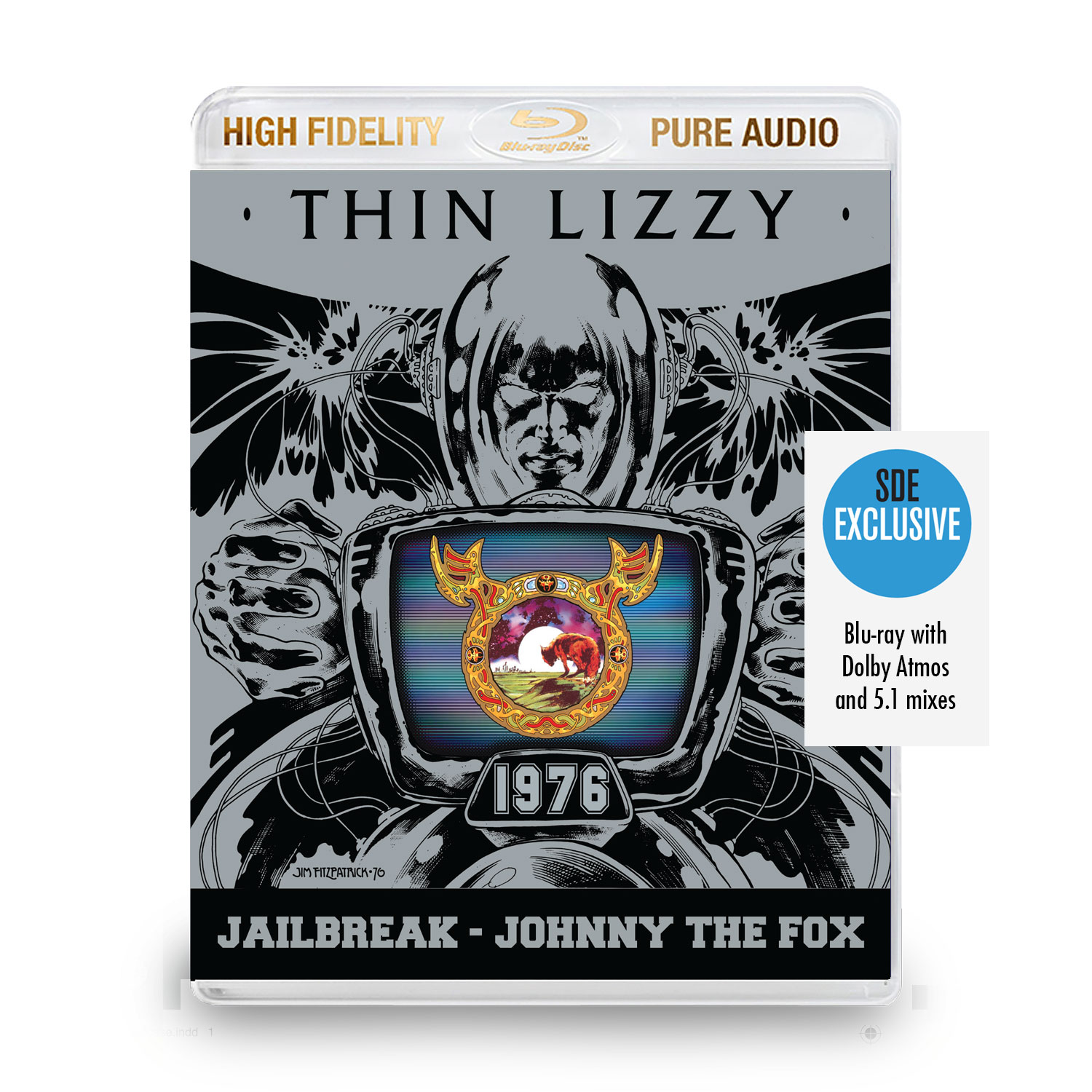
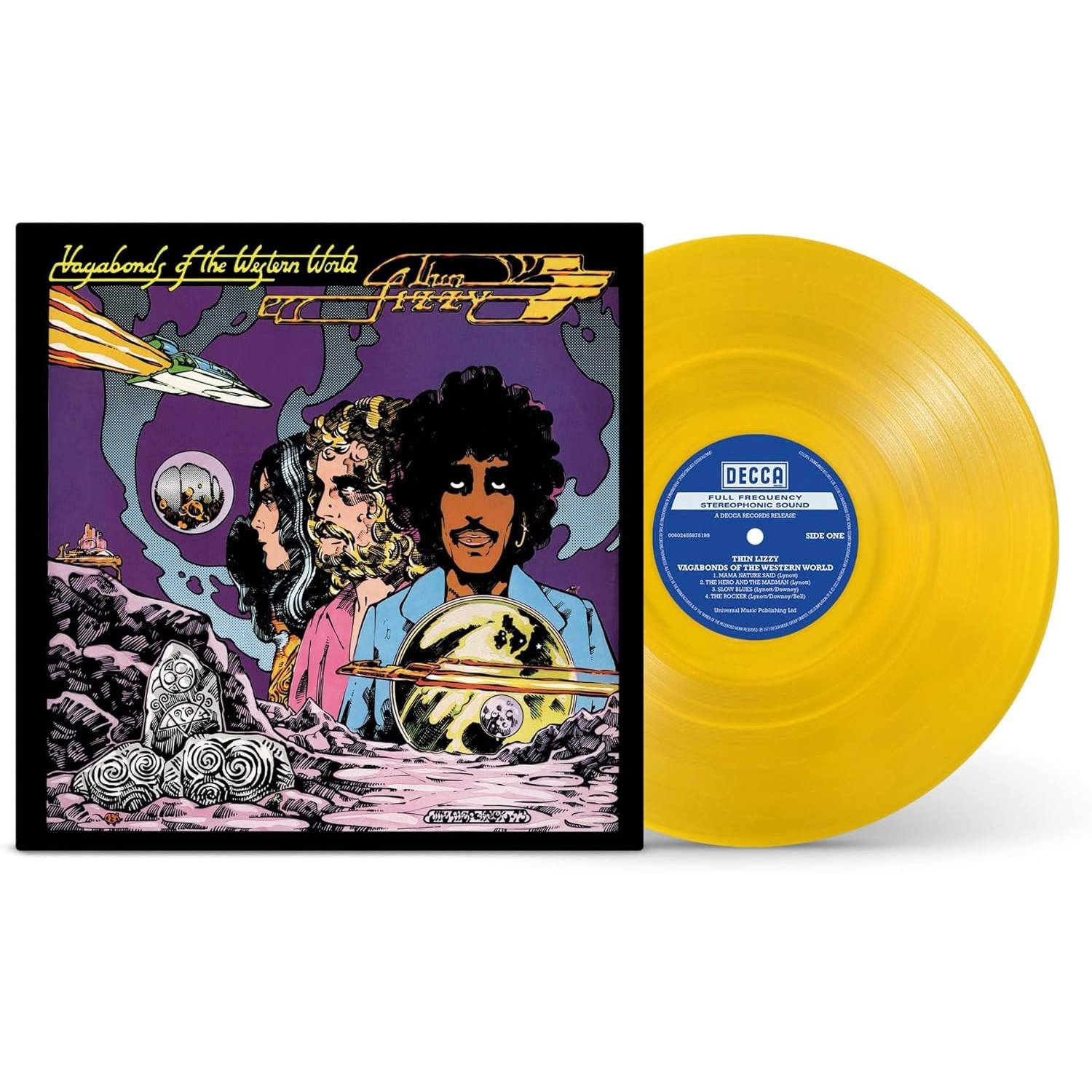
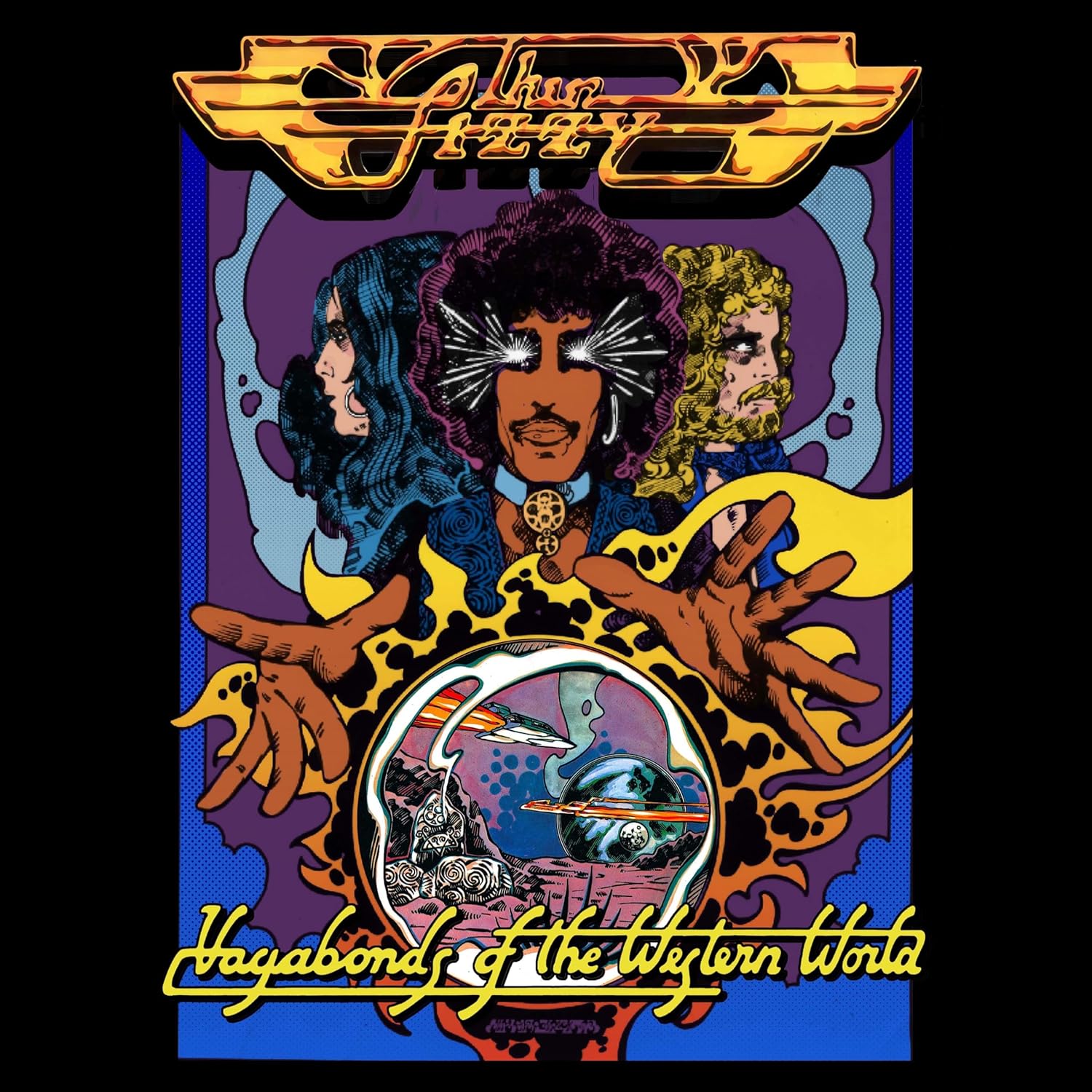
By Sean Hannam
18